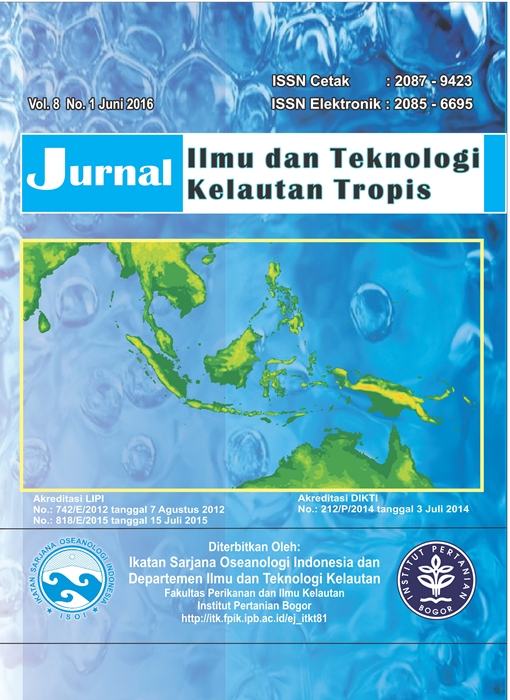MARINE TOURISM SUSTAINABILITY DEVELOPMENT IN MARINE RECREATIONAL PARK ANAMBAS ISLAND
Abstract
Mantang Besar and Mantang Kecil islands contain marine resources that can be developed for ma-rine tourism activities. For the above purpose, a study is needed to assess the potential of the islands. The objectives of this study were: (1) to analyze the sustainability potential of marine tourism on Man-tang Besar and Mantang Kecil islands and (2) to determine the policy and strategy to develop marine tourism in Mantang Besar and Mantang Kecil islands. Multi-Criteria Analysis (MCA) with Rapid Appraisal Index Sustainability of Ecotourism approach was used for the sustainability analysis of the marine tourism potential in both islands. The results showed that the sustainability status of marine tourism potential on Mantang Besar and Mantang Kecil islands for A dimension (ecology) was in ave-rage of 50.4592 within the category of sustainable, for B dimension (socio-economic) with average of 31.6113 within the category of less sustainable, and C dimension (institutional-technology) with ave-rage of 32.5581 wihtin the category of less sustainable. For the succes of the strategy development, B dimension should be prioritized and followed by B and C dimensions.
Keywords: MCA, marine tourism development strategy, Anambas islands
Downloads
The author submitting the manuscript must understand and agree that the copyright of the article manuscript must be submitted/transferred to the Jurnal Ilmu dan Teknologi Kelautan Tropis. This work is licensed under the Creative Commons Attribution-ShareAlike 4.0 (CC BY-SA) International License in which the Author and Reader can copy and redistribute the material in any media or format, and remix, modify and build material for any purpose, but they must provide appropriate credit (citing articles or content), provide a link to the license, and indicate whether there is a change. If you mix, change, or create material, you must distribute your contribution under the same license as the original.



.png)














